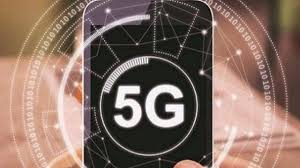Introduction
The advent of 5G technology has brought about a seismic shift in the way we connect to the digital world. Offering unparalleled speeds and responsiveness, 5G has become the cornerstone of modern communication and connectivity. One intriguing aspect of 5G technology that has caught the attention of tech enthusiasts and experts alike is the phenomenon of upload speeds surpassing download speeds. This reversal of the traditional paradigm opens up new avenues for applications, services, and experiences. In this article, we delve into the mechanics behind this trend, the implications it holds, and the potential it unlocks for the future of technology.
Understanding 5G Technology
Before delving into the specifics of upload speeds surpassing download speeds in 5G networks, it’s crucial to have a clear understanding of the technology itself. 5G, short for fifth generation, represents the latest iteration in mobile communication standards. It boasts remarkable advancements over its predecessor, 4G, including higher data rates, reduced latency, and increased capacity. These improvements are made possible through the utilization of higher radio frequencies, advanced modulation techniques, and the integration of cutting-edge technologies such as massive multiple-input, multiple-output (MIMO) systems and beamforming.
The Traditional Paradigm
In the world of telecommunications, the traditional paradigm has always placed greater emphasis on download speeds. This is largely due to the consumption-heavy nature of internet usage, where users frequently engage in activities such as streaming videos, browsing websites, and downloading files. Consequently, network infrastructure and optimizations have been geared towards ensuring swift download experiences, leading to a noticeable discrepancy between download and upload speeds in previous generations of mobile networks.
The Reversal in 5G
The distinctive characteristic of 5G networks, and the focal point of this article, is the reversal of the traditional speed hierarchy. In specific scenarios, users might experience upload speeds that surpass their download speeds. While this phenomenon might appear counterintuitive at first, it is rooted in the strategic decisions made during the design and implementation of 5G networks.
Factors Driving Upload Speed Advancements
Several key factors contribute to the phenomenon of higher upload speeds in 5G networks:
Spectrum Allocation: 5G networks leverage a broader spectrum range, including higher frequency bands. These bands offer greater potential for transmitting data in larger quantities, allowing for enhanced upload speeds.
Symmetric Data Flow: Unlike previous generations that predominantly focused on asymmetric data flow, where download speeds were prioritized over upload speeds, 5G architecture emphasizes symmetric data flow. This balance enables higher upload speeds and aligns with the increasing demand for two-way communication in applications like video conferencing, cloud-based services, and real-time collaboration.
MIMO and Beamforming: Massive MIMO systems and beamforming, integral to 5G technology, enable targeted data transmission. This capability enhances upload speeds by directing data to specific devices or locations more efficiently.
Low Latency: 5G’s reduced latency is crucial for applications that require real-time data transfer, such as remote surgery, augmented reality (AR), and virtual reality (VR). Higher upload speeds are essential for maintaining the quality and responsiveness of these applications.
Implications and Applications
The phenomenon of upload speeds outpacing download speeds in 5G networks opens up a realm of possibilities and implications:
Collaboration and Remote Work: With the rise of remote work and virtual collaboration, higher upload speeds empower seamless video conferencing, file sharing, and collaborative content creation.
Cloud Computing: As businesses and individuals increasingly rely on cloud-based services, faster upload speeds enable quick data backups, software updates, and efficient utilization of cloud resources.
Content Creation: Content creators, including video producers and livestreamers, benefit from expedited content uploads, enabling them to share high-quality media more efficiently.
IoT and Real-time Monitoring: The Internet of Things (IoT) thrives on real-time data transmission. Higher upload speeds support applications such as smart cities, industrial automation, and remote monitoring of critical infrastructure.
AR and VR: Immersive technologies like AR and VR require rapid data upload to maintain an uninterrupted and immersive experience. 5G’s upload speed superiority enhances these technologies’ viability.
Telemedicine: Remote healthcare services heavily rely on uploading medical data and images. Faster upload speeds improve the quality and accuracy of remote diagnosis and treatment.
Emerging Innovations: The phenomenon of higher upload speeds might spur the development of new applications and services that take advantage of this unique feature, expanding the technological landscape further.
Future Prospects
The trend of upload speeds surpassing download speeds heralds a new era of technological innovation. As 5G networks continue to evolve and expand, it is plausible that this phenomenon will become more prevalent and impactful. Network providers and technology developers are likely to harness this unique characteristic to shape new business models, service offerings, and user experiences.
Conclusion
In the realm of 5G technology, the reversal of the traditional hierarchy between upload and download speeds is a testament to the transformative power of innovation. This phenomenon not only challenges conventional expectations but also lays the foundation for a future where seamless communication, real-time collaboration, and immersive experiences are the norm. As 5G networks mature and their capabilities expand, the implications of upload speeds outpacing download speeds are bound to shape the way we interact with technology, creating opportunities that were once considered distant possibilities.















